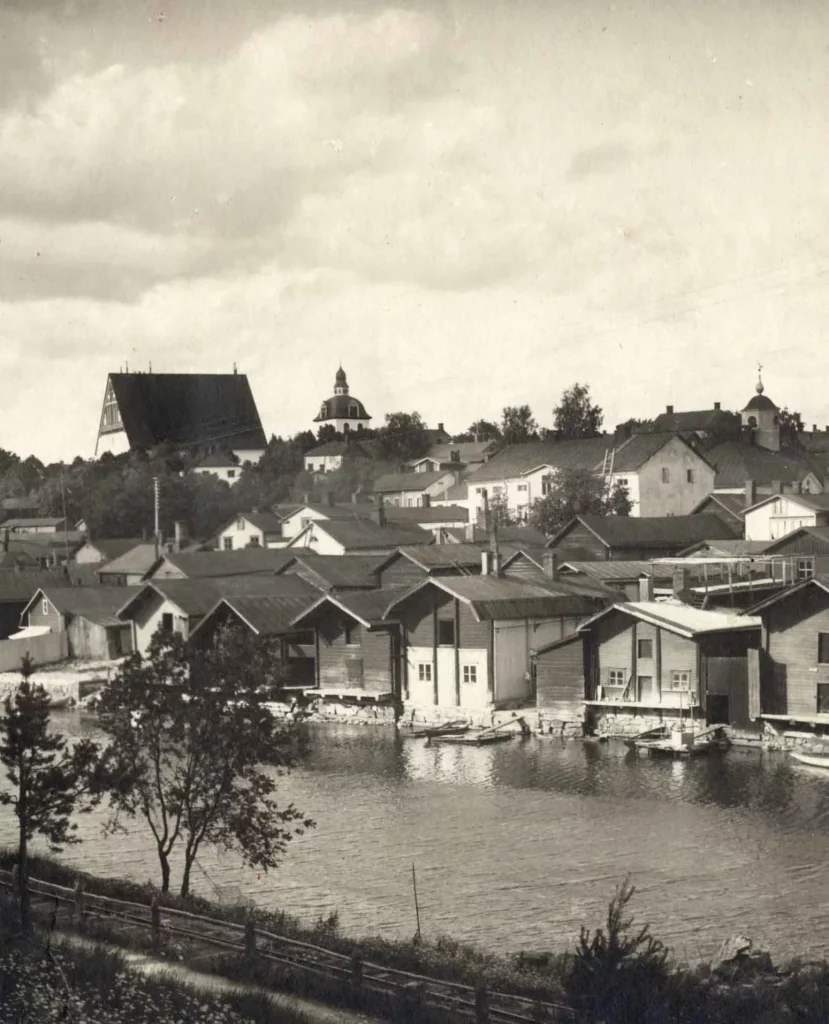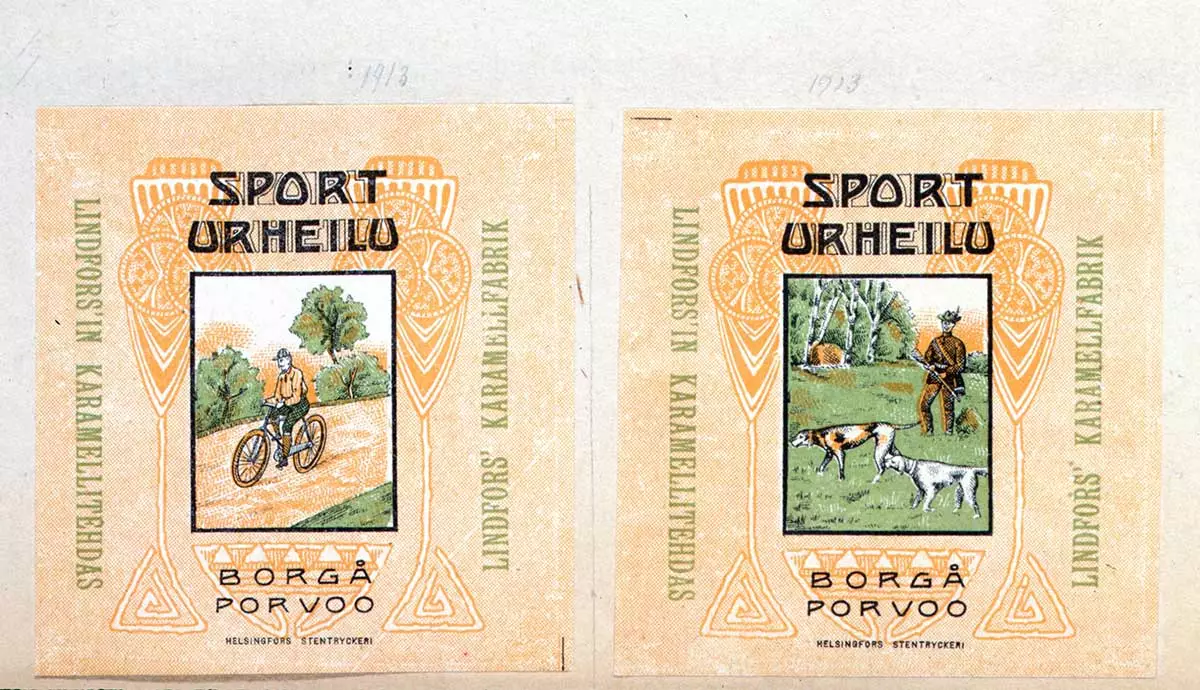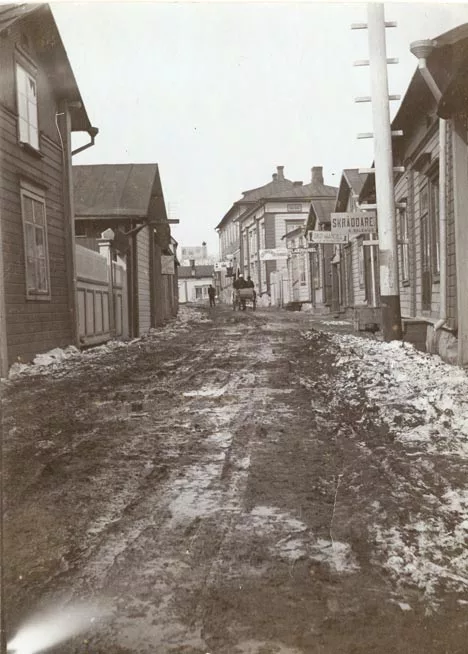(1870–1890)
About 150 years ago…
A.W. Lindfors sets up his bakery in 1871
By the river of Porvoo, in the town with the red wooden houses along the waterway and the curvy cobblestone roads, the population enjoyed a period of economic recovery in the 1870’s.
Around 3 500 residents lived in Porvoo, the majority still in the Old Town, but the more affluent had started moving into the modern empire style part of the town, designed by C.L. Engel.
The Old Town was considered medieval, cramped and susceptible to fire. There was no sewage system, people drew their water from wells and washed their clothes in the river.
There was a distinct smell of tar, red soil, animals, horses, tannery, cobblery and bakery. You could hear the clopping of horses.
Finland, as part of the Russian Empire, was slowly recovering from the great hunger years (1866-1868) and, with the disintegration of the old social order, the workers’ situation improved. People could buy luxury products, such as pastry and sweets. At that time, in 1868, the craft guilds were removed and people were allowed to set up businesses.
It wasn’t easy, though, there was little capital and it was difficult to get a mortgage.
This was more or less what the world looked like when the 18-year old bakery apprentice August Wilhelm Lindfors dreamed of a bakery of his own.
A license to start a bakery meant paperwork. Quite a few documents were needed: a priest’s certificate, personal data, an enquiry concerning the professional knowledge of the applicant and a written recommendation from the Craft and Factory Association.
Prior to 1879 the applicant of civil rights also had to have a good reputation.
License was granted. A.W. Lindfors’ bakery was founded on July 31st, 1871.
Getting a mortgage was complicated and thus many bakeries started on a small scale, often in their own kitchen. That was what A.W. Lindfors also did.
According to the church registers, A.W. Lindfors lived at many different addresses in the 1870’s. Most of them situated at the lower branched mouth of the river, a field belonging to the town.
Few details of the first years of the bakery are known, as a fire in 1945 destroyed many archives.


We do know something.
As from the 1880’s, the address of the bakery and the baker himself was Villa Ilomäki, today Villa Ånäs.
In 1889 the Lindfors bakery employed four persons and the enterprise had grown into the second biggest bakery of seven in Porvoo. Five years later the bakery had eight employees and was the biggest bakery in Porvoo according to production value.
Few details of the employees are found, but we know of one: Arthur Richard Lindfors, a Finnish wrestler and Olympic medalist. A.R. Lindfors told that he had been an apprentice at the Lindfors bakery and his wrestling career started with his having to lift heavy sacks of flour. In spite of his surname, he was not related to the baker.
The profession as a baker was not very common at that time – bread was baked at home – but the town of Porvoo had many bakeries in relation to its size. All bakeries did not have employees; it was more of a side-line occupation for the lowest social class.
Little by little the industrialization reached the bakery business and the competition intensified. The industrial revolution at the end of the 1800’s, followed by the well-needed boost, was the beginning of the large-scale bakery business of today. The first steam ovens entered the Finnish capital, Helsinki, in 1890 and the electric motors boosted the business further.
Borgå was also industrialized. For example, the town had a liquor and lemonade factory, a printing house, WSOY (1878), and a tobacco factory.
Shortly A.W. Lindfors sweets and marmalade factory was to be set up in Porvoo.








